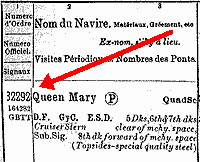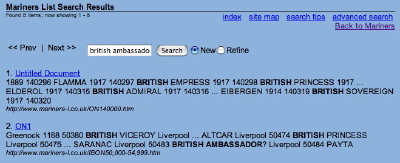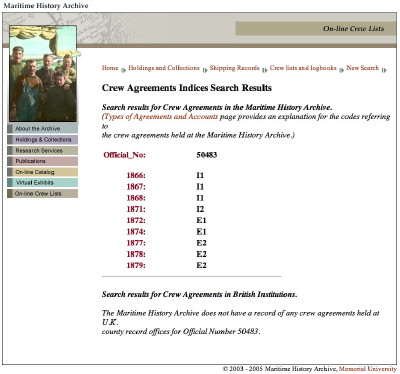You
are receiving this because your address is subscribed at: www.jaunay.com/newsletter.html

June 2008
June Seminars
11: Researching the maternal line, Park Holme Public Library 10:30am
22: Coming to grips with FamilySearch, WEA Centre Adelaide 10:00am
29: Finding families in newspapers, Port Pirie District Family History Group 1:00pm
See the seminar program for more details.
Some interesting web sites
The Proceedings of the Old Bailey, 1674-1913 are available online at: www.oldbaileyonline.org
The Records of the Parliaments of Scotland to 1707 is a fully searchable database containing the proceedings of the Scottish parliament from the first surviving act of 1235 to the union of 1707 at: www.rps.ac.uk
The Official Non-Parochial BMDs Service is a partnership between TNA and S&N to have some searchable English/Welsh non-conformist parish registers at bmdregisters.co.uk
C19th century SA records
At a recent meeting of the State Records Council it was resolved that all South Australian government departments will be required to preserve all existing 19th century records. Previously such records were subject to consideration for disposal if not deemed of significant interest and thus worthy of retention.
World Vital Records
This web sitewill soon have an Australian focus. To keep in touch with developments subscribe to their newsletter.
In
this issue:
News
June seminars
Some interesting web sites
C19th century SA records
World Vital Records
Feature article
How to find records of a sailor on crew lists for the period 1835 to 1900
News
June seminars
Some interesting web sites
C19th century SA records
World Vital Records
Feature article
How to find records of a sailor on crew lists for the period 1835 to 1900
![]()
Adelaide
Proformat
5 Windana Mews
Glandore SA 5037
Australia
Tel: +61 8 8371 4465
Fax: +61 8 8374 4479
proformat@jaunay.com
Services
• Research
• Drafting charts
• Locating documents
• Seminar presentations
• Writing & publishing
• SA lookup service
• Ship paintings
Proformat News acknowledges the support by ![]() AWE
AWE
This article is designed to assist those whose ancestor arrived in Australia in the nineteenth century as a member of a merchant ship's crew.
Finding a ship's crew is much easier if you know the name of the ship that they sailed on. It is also extremely useful to find out her official number and, if possible, her port of registry. All British ships were given a unique official number when they were first registered. The number stayed with the ship throughout her life, even if she was re-registered or the ship's name was changed.
You can look up official numbers in Lloyd’s Register of Ships. Full sets of this annual publication can be found in all Australian state and territory libraries and the Australian National Maritime Museum in Sydney. Some other libraries may have limited numbers available.
 The
amount of detail included in Lloyd’s Register of Ships has increased
over the years, so always check the introductory pages of the volume you
intend to use and locate a key to the abbreviations. Each entry will provide
you with lots of statistics about the vessel of interest but the key piece
of information you require for this exercise is the official number [ON].
It can be found in the left column of the tables (see picture adjacent)
but some care is needed because there is other information in this column
that may confuse. The top number is the entry number in the volume and it
is the second number you require. Underneath you may find a 4 letter code
which is the International Signal Code which a ship could use to signal
its name by a flags or radio.
The
amount of detail included in Lloyd’s Register of Ships has increased
over the years, so always check the introductory pages of the volume you
intend to use and locate a key to the abbreviations. Each entry will provide
you with lots of statistics about the vessel of interest but the key piece
of information you require for this exercise is the official number [ON].
It can be found in the left column of the tables (see picture adjacent)
but some care is needed because there is other information in this column
that may confuse. The top number is the entry number in the volume and it
is the second number you require. Underneath you may find a 4 letter code
which is the International Signal Code which a ship could use to signal
its name by a flags or radio.Note that you can also look up official numbers in the Mercantile Navy List but this is not readily available outside of the UK. The major difference between the two publications is that since 1886 Lloyd’s Register of Ships has listed every seagoing ship in the world over 100 gross tons, while Mercantile Navy List only covers British vessels. However, the Mercantile Navy List includes small vessels not in Lloyd’s Register of Ships. There are also some examples in the period 1850 to 1874 where vessels are listed in the Mercantile Navy List but are not to be found in
 Lloyd’s
Register of Ships. The Mercantile Navy List is useful in that
it lists the dates when steam and motor vessels were registered in their
home port. This date would prove useful when looking up a ship in Customs
registers.
Lloyd’s
Register of Ships. The Mercantile Navy List is useful in that
it lists the dates when steam and motor vessels were registered in their
home port. This date would prove useful when looking up a ship in Customs
registers.There is an online site, Mariners [www.mariners-l.co.uk] that has a list of over 40,000 ONs. The number to the left of the vessel listed as a result of the search is her official number. See the illustration (above) of the results of a search for the British Ambassador whose ON is revealed to be 50483. Make a note of the number(s) and then click the link to go to the main (official number) list [www.mariners-l.co.uk/IBON-INDEX.html] and check out the details (see below). The ship's Port of Registry is also shown. If this search fails then a visit to the library is in order!

British ships were registered at one of over a hundred ports and knowing the Port of Registry is helpful as this is the port under which their crew lists were filed. Ships were sometimes re-registered at a different port. In this case, the crew lists are sometimes to be found with those for the new port but sometimes with those for the old.
If you have no idea of the ship's name your only recourse is to try the web site called Crew List Index Project (CLIP) that lists a number of indexes of sailors’ names. [www.crewlist.org.uk/index.html] If the vessel of interest or the crewman came to Australia and remained here, then you should start your search at The National Archives of Australia [NAA] and look in the mercantile marine records collections. Every vessel entering Australian waters had to provide a crew list from 1906. The NAA and state-based government archives hold earlier records of crew desertions and discharges that may well apply to that seaman ancestor. A table relating to NAA is appended at the end of this brief article. For state archives use their online search facilities.

You may also be fortunate enough to locate a ship's manifest in a state-based Australian archive that includes a listing for the crew. While these are far less common than passenger lists they do exist. In South Australia for example, GRG41/8: Manifests of incoming ships at Port Adelaide with lists of passengers and crew 1838-42. There are other examples of incidental material relating to the subject such as the microfiche index of passengers and crew in and out of Sydney extracted from Sydney newspapers 1830 to 1841 published by the Grafton Family History Centre.
If your searches within Australia have failed and you have found the basic information about the seafarer's vessel, the next step is to track down the Agreements and Crew Lists for that ship. The lists are held at many different places:
- 10% are at local record offices or archives see Crew List Index Project (CLIP)
- 10% are at the National Maritime Museum (NMM), Greenwich this collection includes for 1861, 1862 and for the years ending in a 5. You will need to ring to order weeks in advance of a visit. They will make photocopies, but there is no index available.
- 10% are at The National Archives, Kew [www.nationalarchives.gov.uk/militaryhistory/merchant/?homepage=mh-merchant] this is a random 10% sample held in series in BT 99 with others in BT 100, BT 144 and BT 165.
- 70% are at the Maritime History Archive (MHA) in Newfoundland [www.mun.ca/mha/holdings/searchcombinedcrews.php]
The National Archives, Kew holsd registers of merchant seamen that may prove useful. These cover the period from 1835 to 1857 which is the only period in time that the British Government maintained such registers. Prior to this time only incidental records of individual sailors were kept. There is a chance the hunter may find an apprenticeship record in BT 150, BT 151 or BT 152 – these date from 1823. For the period following 1857, researchers will need to use the Agreements and Crew Lists as previously discussed. Four registers of seamen's service were created:
- BT 120: Register of Seamen (by surname) Series 1 1835-1836 - see image below
- BT 112: Register of Seamen Series 2 1835-1844 (name index in BT 119)
- BT 113: Register of Seamen's Tickets 1845-1854 (the surname index
is in BT 114)

- BT 116: Register of Seamen (by surname) Series 3, 1853-1857
Australian C19th deserters and discharged crew by colony at the NAA
Colony |
Deserters |
Discharged |
NSW |
— |
Sydney from 1860 |
QLD |
— |
Brisbane from
1855 Bowen from 1863 Bundaberg from 1877 Mackay from 1870 Maryborough from 1862 Rockhampton from 1863 Townsville from 1887 |
SA |
Adelaide from 1852 | Adelaide from 1852 |
TAS |
— |
— |
VIC |
— |
Geelong from 1887 |
WA |
— |
— |
newsletter-leave@jaunay.com